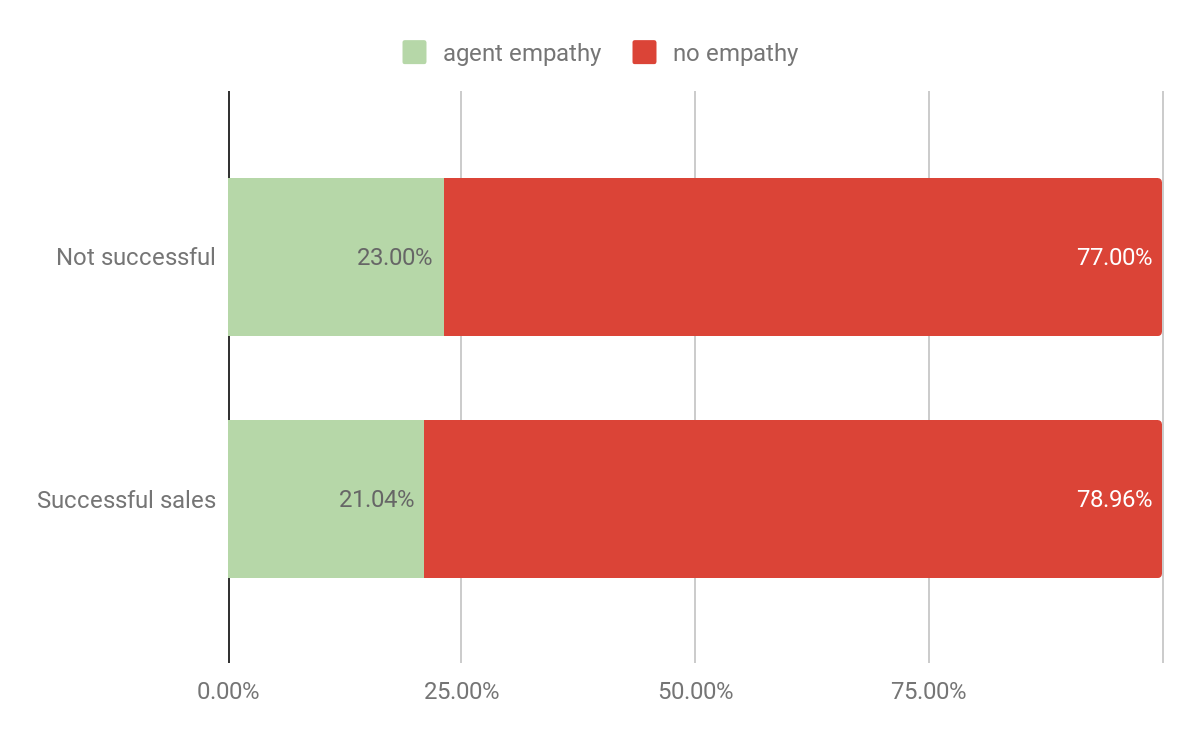How to Communicate Effectively with Your Customers
In the previous post, we discussed how What you do impacts the quality of your customer interactions and your bottom line, and how analysing your conversations in real-time can help transform your customer satisfaction. Today, we are focusing on the What you say — the communication aspect of your customer interactions.
We analysed over 900,000 customer interactions, and derived five elements of communication that made an impact with regards to successful sales outcomes and higher customer satisfaction:
1. Empathy
Empathy is a very popular one, and there is a lot of advice online and in literature on how you should use it in order to achieve high NPS and customer satisfaction scores. In the first post of this series, we’ve seen however that significant empathy doesn’t help with removing low CSAT resolution scores. Which brings back the importance of delivering quality service and products to your customers, before you do anything else. In other words, empathy is not a magic ingredient, and if your products and services are not satisfying for the customers, improving them should be your number one priority.
5 elements of effective communication in contact centres
We analysed inbound support calls with the Sentient Machines platform and extracted those with emphatic agent behaviour, then correlated these with Customer Satisfaction (CSAT) Agent and Resolution scores from our customer.
CSAT Agent — reflecting whether the customer was satisfied with the quality of the interaction with an agent,
CSAT Resolution — reflecting whether the customer was satisfied with the resolution.
For those interactions that received the highest CSAT Agent score of 5 (see Figure 1), there was as much as 33.9% of empathy, which can lead us to a conclusion that empathic agents have a high chance of receiving a very high CSAT score.
For those interactions that received the lowest CSAT Agent score of 1, there was only 0.66% of agent empathy. However, we see that almost 24.5% of empathy is found in calls with the lowest CSAT resolution score of 1.
Similar to what we’ve discussed above, Figure 1 highlights the importance of resolution in addition to training agents.
Figure 1: Absence of Agent Empathy Drives low CSAT Agent Scores, while significant Empathy Doesn’t Help to Avoid Low CSAT Resolution Scores
In Figure 2, we demonstrate results of agent empathy in sales calls. More empathy is present in successful sales — 15% as opposed to 8 %, and this is inline with most studies you will find in literature.
Figure 2: Empathetic language drives sales
However, in another study (Figure 3), we observe the opposite impact. In this instance, empathy is present almost 2% more in unsuccessful sales compared to successful sales calls. When we analysed why, we found that these conversations included retention calls — conversations with customers who were enquiring to cancel, while the company tried to retain them by offering better deals.
Figure 3: More empathy in unsuccessful sales due to agents increased effort to retain customers.
In Figure 4, we plot different emotion algorithms extracted with the Sentient Machines platform, against agents and their sales outcomes. The red line depicts the sales success rate per agent, and the blue bars demonstrate the presence of a particular emotion. We can quickly observe the exact same trend of the red line reaching the peak and then going down, with some arriving at the peak faster than the others. The lesson is that we need emotion, but you don’t want to be dragged into it. To be more effective, you need to acknowledge what’s happened and move on, proposing a solution.
If you are validating your own mistakes for too long it might become counter-productive.
Figure 4: Trend of emotion in calls driving sales outcomes
In conclusion, empathy is great, but not enough. If over-used, empathy can be counter-productive.
2. Personalisation
The next important aspect of effective communication we derived is Personalisation. In Figure 5 we present different techniques we measured for 9 different agents, whose sales success rates range from 6.63% to 33.62%.
What stands out is that Agent 1 was the only one who applied Personalisation technique. They knew everything about customer’s buying behaviours, what the customer liked or disliked. This knowledge resulted in Agent 1 having 3 times more successful sales than the average of everyone else, and over 5 times more successful than the least successful agent, which is outstanding.
The absence of emotion, and instead showing that you care through knowing your customer preferences, has a potential to create even deeper connection.
Figure 5: To Be Emotion Centric, Learn about Your Customer History
3. Reassurance
The next important communication element is Reassurance — Reassuring your customers early in the conversation that you are:
Focused on solving their problem.
Focused on their benefits.
Removing any risks.
At the same time, you need to be actively listening.
4. Upbeat and Confident Tone of Voice
From analysing the data, we found that positive language and upbeat tone is more effective than positive language alone. It is also important to show active customer engagement e.g. by asking them questions.
Fake is not cool
Agents who tried too hard to follow the ‘positive’ script, didn’t come across genuine and this impacted their final success score. Those who acknowledged the company failures and moved on, on average achieved better results.
5. Limit Small Talk
While there is a mixed advice on this one in literature, we found that while you are trying to limit the small talk, you can still be friendly, as too much of it can irritate your customers who could be busy. You can talk about their holidays if they are driving that conversation, but the key thing to remember is:
Listen to your customer, acknowledge their views and emotions, and move on. Your focus should be quick resolution.
In Summary
Keep listening to your customers and improving your product or service based on what your customers say. Train your team to be exceptional in their communication with customers so they can represent your company culture well:
Use empathy in genuine ways, and avoid using scripts.
Know everything you can about your customer history and preferences, and show your customers that you genuinely care.
Reassure your customers early in the conversation about their benefits and removed risks (e.g. “you can cancel any time”).
Use an upbeat and confident tone of voice that is genuine.
And finally, use small talk with caution. Your customers might be busy.
If you want to trial Sentient Machines platform on your data, register your interest for our end of summer offer here.













